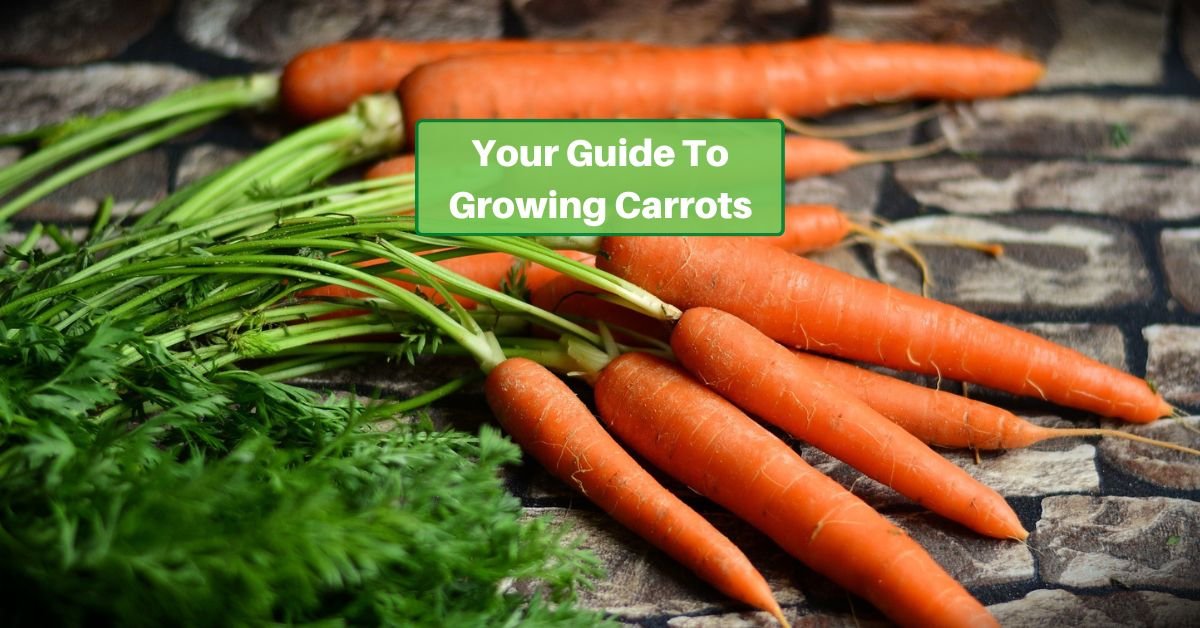Carrots, with their bright colors and sweet crunch, are a popular and nutritious addition to any home garden. Both novices and expert gardeners can enjoy growing this wonderful vegetable.
To help you understand how to plant, care for, and harvest your carrots, we’ve created this short guide for you.
Choosing the Right Time to Plant
Timing is crucial when it comes to planting carrots. Carrots are a cool-season crop, so it’s best to plant them in early spring. You could also try late summer for a fall harvest.
Soil temperatures between 50°F and 70°F (10°C – 21°C) are ideal for germination. In warmer climates, consider planting carrots in the cooler months to avoid heat-related issues.
Preparing the Soil
Carrots thrive in loose, well-drained soil that is free of rocks and debris. Before planting, prepare the soil by loosening it to a depth of 12 to 15 inches. Remove anything that could prevent growth and create a fine, crumbly texture to encourage healthy root development.
Planting Carrot Seeds
Carrots are typically grown from seeds rather than seedlings. Sow carrot seeds directly into the garden soil, as they do not transplant well because of their delicate taproot.
Make shallow furrows about 1/4 to 1/2 inch deep and sprinkle the seeds evenly along the row. Cover the seeds with a thin layer of soil and gently press it down.
Order Carrot Seeds Online
Sunlight and Soil Requirements
Carrots thrive in full sunlight, although they can tolerate partial shade. Ensure that your garden bed receives at least 6 hours of direct sunlight daily.
They prefer slightly acidic to neutral soil with a pH level between 5.8 and 7.0. Amending the soil with compost or well-rotted manure can improve its texture and nutrient content.
Fertilizing and Watering
Carrots are light feeders and don’t require heavy fertilization. Mix a balanced, all-purpose fertilizer into the soil before planting. But avoid fertilizers high in nitrogen, as they can lead to excessive foliage growth at the expense of root development.
Consistent moisture is essential for carrot germination and growth. Keep the soil consistently moist but not waterlogged. To prevent crust formation, water gently or use a soaker hose. Mulching around the carrot plants can help retain soil moisture and regulate temperature.
Thinning and Care
Once carrot seedlings have emerged and grown to a few inches tall, thin them to achieve proper spacing. Carrots need space to grow their roots without crowding. Thin the seedlings to about 2 to 3 inches apart for smaller varieties and 3 to 4 inches apart for larger types.
Pest and Disease Management
Carrots are susceptible to pests such as carrot flies and aphids, as well as diseases like root rot. Consider using row covers to protect young plants from pests. Carrot flies fly low, so a barrier about 2 feet high around your seedlings can help keep them away.
Practicing crop rotation and avoiding overhead watering can help prevent disease issues.
Harvesting Carrots
Harvesting carrots at the right time ensures the best flavor and texture. Carrots can be harvested when they reach a desirable size and color. Gently pull a carrot from the soil to check its size and taste. Baby carrots can be harvested when they are about the thickness of a pencil. Larger varieties should be harvested when they reach their mature size.
To harvest, carefully loosen the soil around the base of the carrot and gently pull it out. Don’t yank it to prevent root damage.
Remove the greens from the carrots, leaving about an inch of stem to prevent moisture loss during storage.
Storing Carrots
Carrots can be stored in a cool, dark, and humid environment to prolong their freshness. The refrigerator crisper drawer or a container filled with slightly damp sand or sawdust do the job perfectly. Proper storage can keep carrots crisp and delicious for several weeks.
Growing carrots in your home garden is rewarding throughout the process, but especially when they arrive on the table. Planting depth, soil preparation, care, and harvest timing are the keys to a successful crop. The right combination of sunlight, watering, and proper maintenance will let you savor the crisp texture and sweet flavor of homegrown carrots in a variety of salads, snacks, stews, and more!










